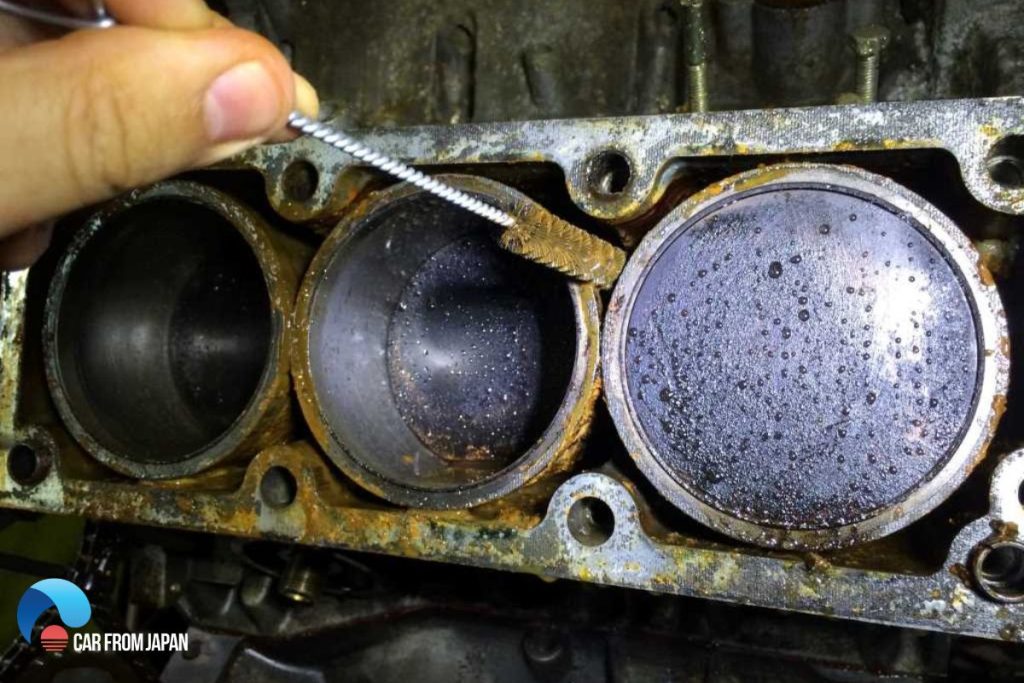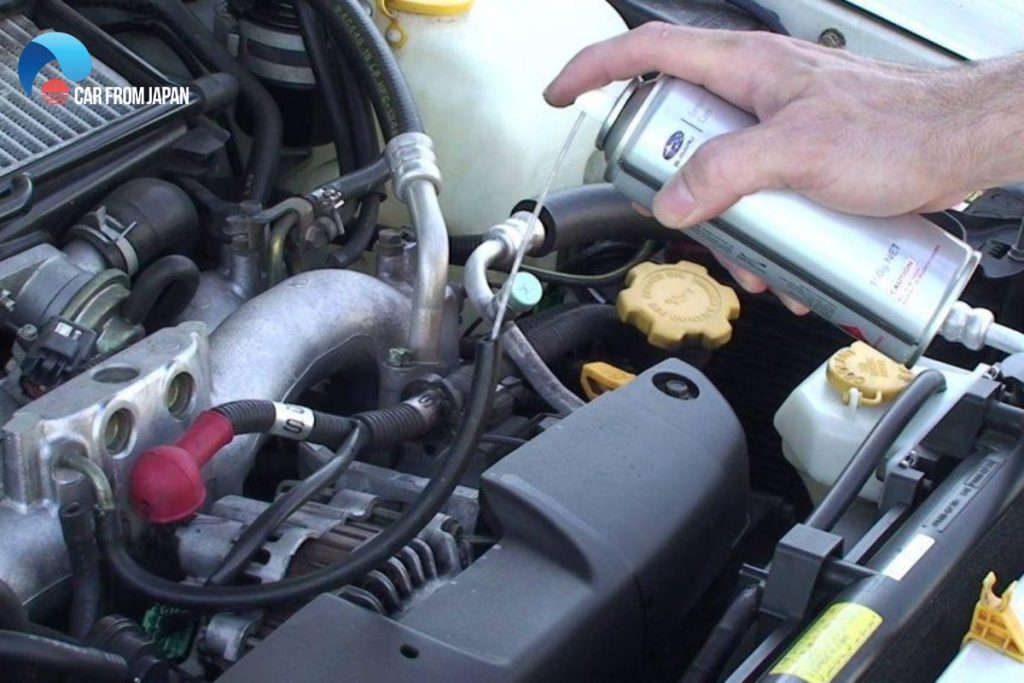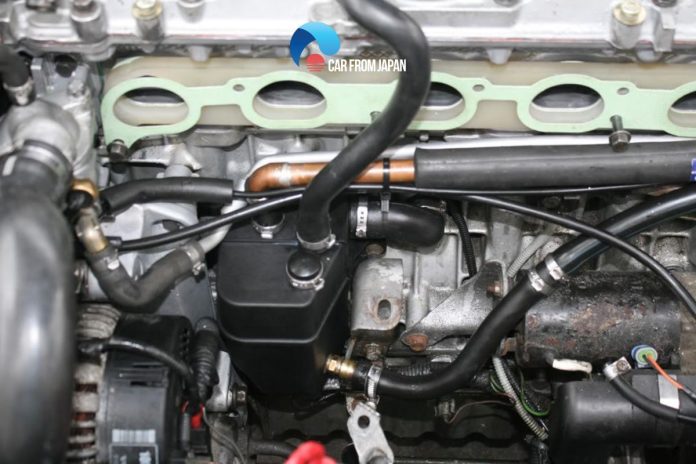All cars, except for electric vehicles, have an internal combustion engine. It means that the car moves forward due to a series of small explosions inside the combustion chambers.
For the explosions to take place, a proper amount of fuel and air mixture has to be in those cylinders. Here comes the intake or inlet manifold. It is a series of tubes that evenly distribute the air into the cylinders.
If there is oil in intake manifold, you may not want to hear anything about what’s going to happen to the whole intake system if left neglected.
Contents
Oil In Intake Manifold: 7 Reasons Why
The inlet manifold passes the air to the cylinders through some valves. These valves open at the beginning of a cycle, then close down when the air is through, and then open again at the beginning of the next cycle.
When you find oil in intake manifold, you should check the following parts to identify the based errors:
The Positive Crankcase Ventilation (PCV) valve
It is the first component to look into when the problem occurs although you should not be worried if there is a small amount of oil in air intake.
It is not rare to have blocked PCV valves on cars with less than 100,000 mileage. You have to examine the entire PCV system. A faulty one will cause an imbalance of airflow and send some oil in air intake.
It will also cause the check engine light to come on. Cleaning or replacing is the option if one or multiple valves are completely blocked or semi-functional.
Clogged oil passage
If you never change the oil in your car, it will collect sludge and deposits and leave them in the oil passage. When oil cannot pass freely through the passage, it gathers inside the top of the cylinder head.
When the passage is blocked, the oil will go through the PCV valve and enter the air intake manifold. What you have to do to get rid of this problem is to pour an engine flush formula into the oil and run the engine a few times.
When the buildup is cleared, change the engine oil and don’t forget to replace the air filter. If it does not solve the issue, take the help of a professional mechanic.

Damaged piston rings
To answer your question about why is there oil in my air intake hose, you may want to take a look at the piston rings. This part can be damaged without giving you any first warning.
The piston rings are responsible for sealing the cylinders within the engine. If they start leaking or damaging, oil can leak into places where it shouldn’t be and cause smoke or many kinds of unexpected problems.
Moreover, loose rings can also cause engine blow-by. The most common visible sign your engine may suffer from oil blow-by is blue smoke from exhaust.
Aged engine
Engines showing signs of old or used too much (more than 100,000km) may be prone to have oil in intake tube. The symptoms can be rough handling and idling, or smoke coming from the exhaust pipe.
In this situation, engine oil in the intake manifold and throttle body will be the least of your concerns. The only option here would be an engine overhaul, and such repairs are not inexpensive.
Clogged air cleaner filter
Another circuit for oil inside intake manifold while causing troubles for your driving performance is a dirty or clogged air filter.

Air filters that are clogged may cause the engine to perform inefficiently and provide less power. They can also let oil into the intake manifold, causing the engine to smoke.
Cleaning unclean air filters is a simple and low-cost repair. The first step is to remove the engine’s air filter. After removing the air filter, it should be cleaned or replaced.
Leaked valve seal
Valve seals are in charge of keeping the valves in the cylinder head sealed. Oil can enter the intake manifold and cause the engine to smoke if they begin to leak.
Repairing leaky valve seals is a very straightforward and affordable procedure. The first step is to remove the engine’s cylinder head. After removing the cylinder head, the valves may be examined for wear. If the valve seals wear out, they must be replaced.
Tear camshafts
Camshafts are critical components of engine operation. They regulate the opening and closing of the cylinder head’s valves. When they wear out, oil can enter the intake manifold and cause the engine to smoke.
Repairing worn-out camshafts is more difficult than repairing leaking valve seals or piston rings. The first step is to remove the camshafts from the engine. After you’ve removed the camshafts, inspect them for wear. If they become worn, they must be replaced.
Broken fuel injectors
The fuel injectors are in charge of distributing gasoline to the engine’s cylinders. If they begin to fail, oil can enter the intake manifold and cause the engine to smoke.
Repairing faulty fuel injectors is more difficult than repairing other engine problems. The first step is to remove the engine’s fuel injectors. After removing the fuel injectors, they should be cleaned or replaced.
In most situations, one of these issues is to blame for the presence of oil in intake manifold. If you’re having this issue with your engine, have a trained mechanic examine it and determine the best method to fix it.
Oil In Intake Manifold: How Serious Is the Problem?
There is nothing to be worried about if it is just a light coating of oil. But, a puddle in the inlet manifold takes the issue to another level. In most cases, it indicates a worn-out engine that cannot function at full force.
The problem does not warrant any immediate action because it will not lead to anything fatal very soon.
But, it does mean that your engine is getting old and you probably have to change several components. It will be better to have it diagnosed in an auto servicing shop. They can suggest better which parts need changing or fixing.
How To Prevent Oil In The Intake Manifold?
Clogged air cleaner filters, broken fuel injectors, or bad piston rings… could be the reason for the oil inside intake manifold, so how to fix these problems.
As previously said, to avoid oil in the turbo air intake, we strongly advise that you clean your vehicle’s air filter and intake manifold regularly. Simple measures can go a long way toward reducing oil leaks in the engine, particularly in the intake manifold.
If you see any of the concerns we discussed above or believe one or two of them are eating at your car right now, it’s time to go to work. If you don’t know anything about cars, don’t try to fix them yourself.

Feel free to contact a local professional mechanic. They will provide you with a better understanding of what has to be done to prevent the same problems from repeating.
How Much Does It Cost To Fix Oil In Intake Manifold?
We have learned how to fix oil in air intake, so how much does it cost to fix oil in intake manifold?
The cost of replacing an intake manifold gasket ranges between $200 and $550. Labor costs range from $150 to $250, but the gasket is often inexpensive, costing between $25 to $130.
Your vehicle may have a few manifold gaskets if it has a V6, V8, or similar engine arrangement with several cylinder banks. Unfortunately, they must all be altered at the same time.
You also have to consider the additional fees and taxes. Overall, replacing the intake manifold gasket is not the most difficult repair job your automobile will ever require, and it should be manageable for the majority of drivers.
FAQs
What should I do if I suspect oil in the intake manifold?
If you suspect oil in the intake manifold, it’s important to have your vehicle inspected by a qualified mechanic. They can diagnose the underlying cause and recommend the appropriate repairs.
Can I drive with oil in the intake manifold?
Driving with oil in the intake manifold can worsen the problem and potentially lead to engine damage. It’s best to address the issue as soon as possible.
Can I prevent oil in the intake manifold?
Regular maintenance, including oil changes and inspections, can help prevent oil leaks and other engine problems.
Is oil in the intake manifold a serious problem?
Yes, oil in the intake manifold can be a serious problem if left unaddressed. It can lead to reduced engine performance, increased emissions, and even engine damage.
Conclusion
Now you have grasped the reasons and consequences when the oil in intake manifold.
Hope after this piece of information, you will know exactly what to do to deal with this issue and perform suitable maintenance acts while keeping your car intake manifold in good condition over time.




Thank you
Thank very much, this wizened me up….
thank you so much that might work i will check if this is right tomorrow …
Excellent article, especially for a newbie! Thanks!
Thanks.
If you have any group please add me